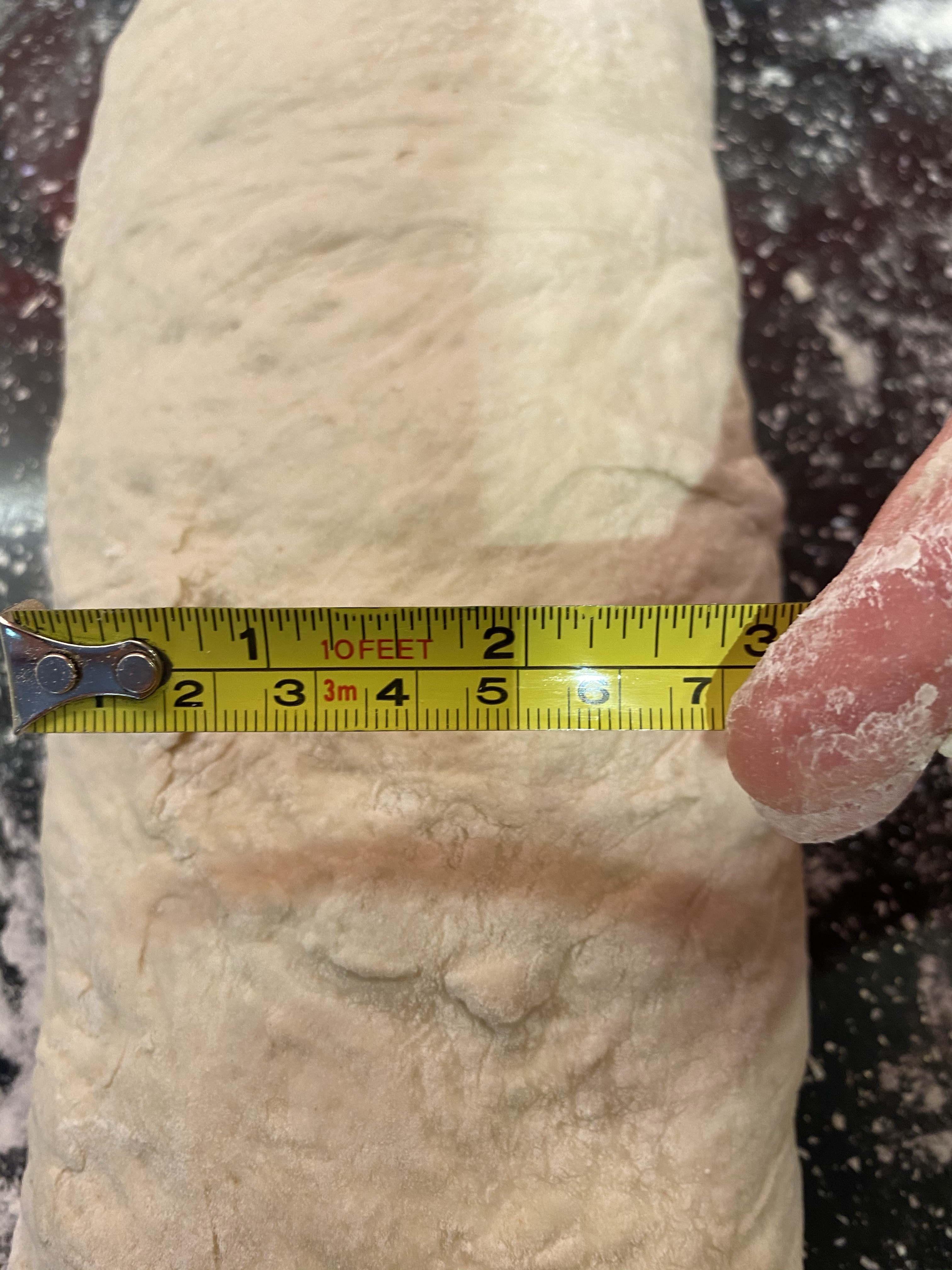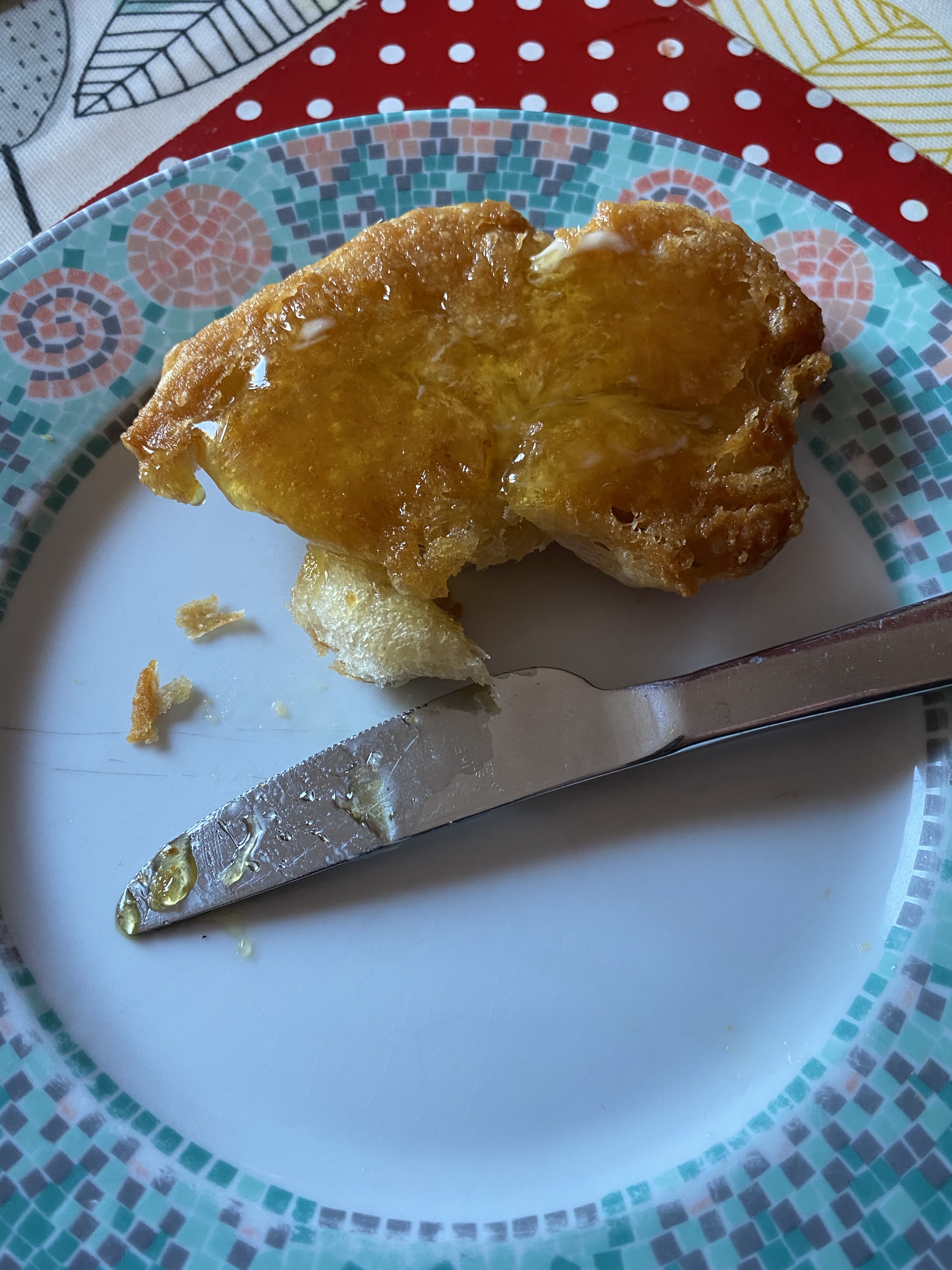
Lockdown has brought out the baker in many of us. In the first, hopeful March lockdown banana bread was the cake of the moment.
Then came sourdough – with many sharing homely snaps of their nurturing starters and stylish crust art.
I am fond of banana bread and did make my favourite recipe a couple of times ( Nigel Slater Kitchen Diaries 2 – dark muscovado & chocolate), but when it comes to sourdough – it’s a big fat NO from me.
I respect those who are evangelical about the yeast free bread’s qualities and I have made sourdough in the past – with varying degrees of success – but I can’t say it was a joyful experience.
The starter palaver and multiple cosseting stages was a bit too ‘needy’ for me 😉and as much fun as following flatpack instructions.
And I have never found that the reward is worth the effort, but I appreciate I may be in the minority with this thinking.
While sourdough perfection is not my thing, I am not immune to a lockdown project and this weekend I decided to try and make Aberdeen rowies .
For those who may not be familiar with the Aberdeen rowie or buttery, it might be unkindly described as a leaden croissant, but not by those of us in thrall to its crispy, fatty, salty loveliness. For those of us who have sampled the aptly named buttery, it is a thing of joy unmatched. They are a sublime taste sensation or as film director Duncan Jones once described them ‘evil bricks of tasty’ .

The rowie / buttery/roll (names vary), has the same flaky, buttery taste of a croissant but with more substance and heft and has a salty flavour . The saltiness means it is delicious served warm with even more butter and golden syrup – or it provides the perfect vehicle for jam or marmalade.
It is a true regional delicacy – and aficionados from the the North East of Scotland whether shire or toon agree it is a baked good of the highest quality and one that is hard to beat. Even if they debate fiercely whether it should be called a buttery, a rowie or a roll.
Whatever name you prefer, the Aberdeen roll gets its golden buttery taste by the addition of generous quantities of fat – the purists say 100% lard – but the recipe I opted for was a 50/50 mix of lard and butter.
To get the flaky texture involves a process similar to that used when making croissants or puff pastry – folding and rolling the fat into the dough several times to achieve lamination.
The fat is distributed and trapped between layers of dough and when heated by some alchemy or magic it creates the flaky texture.
I had read lots of guides on how to do this, and diagrams a plenty, but I only fully understood the method by watching a demo and attempting it with guidance, when I attended a one day bread and croissant making course a few years ago.
Back to my own rowie experiment. I was mostly following a recipe from the newspaper clipping below and testing my weights and measures skills to convert ounces to grams & work out the right ratio of fast acting yeast instead of bakers yeast.I reduced the quantity of yeast from 30 g to 11 g of fast acting yeast.

The recipe is quite straightforward & probably the hardest part is whipping the lard / butter combo to the correct consistency.
The initial dough is made with strong flour, salt, sugar, yeast and water.
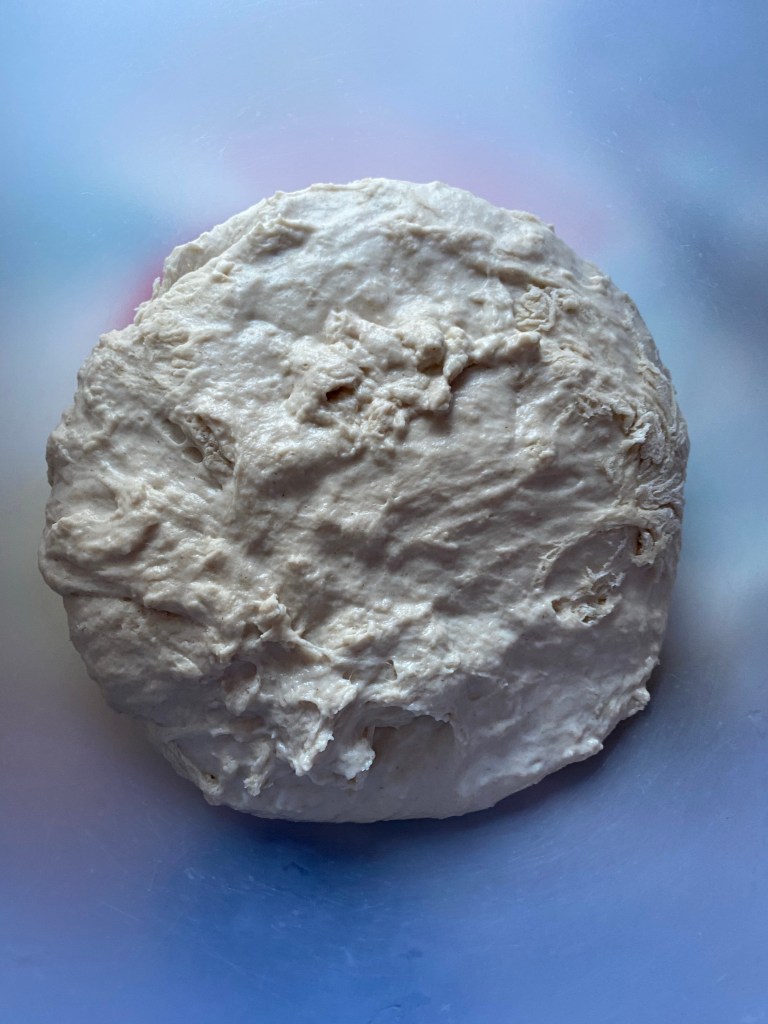
The recipe did not suggest kneading at this first stage but I did give the very sticky dough a short knead before leaving it to prove covered in a bowl with a damp tea towel for about an hour. The dough should double in size.
In the meantime – I creamed the lard and butter together – I did this by hand but reckon it could be done with a food mixer. It has to be creamed up a really soft spreadable consistency.

You then divide the lardy/ buttery mixture into 3 and roll out the risen dough to a rectangle shape 4 inches wide and an inch thick.
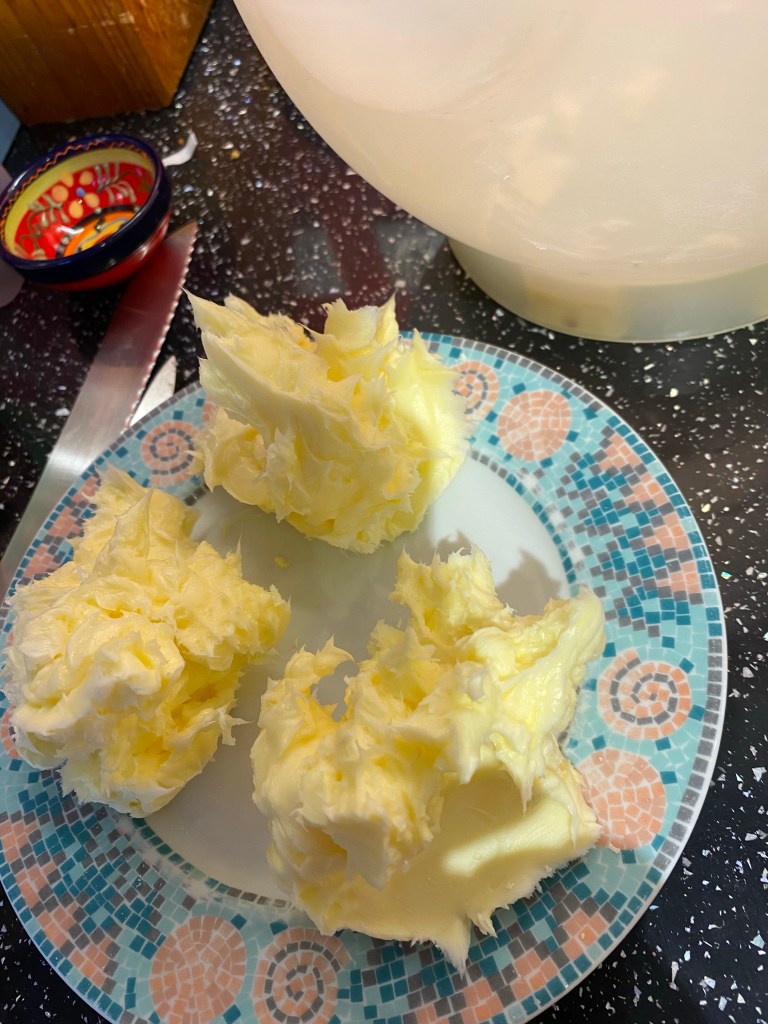
The first third of fat is added – by dabbing small dots of fat to the dough then folded over . I did go a bit free range here because the instructions were to treat as for pastry so I may have rolled and folded more than intended.
You do this process 3 times until all the fat is used up chilling the dough each time.
I put the dough in the fridge for about 10 minutes between each butter and folding session then subsequently discovered in another recipe that this should be 30 minutes, but as is the way with real life – I was doing this while also wanting to do other stuff – ( get out for a walk before dark ) so I did not chill it for 30 minutes.
I then divided the dough into 14 pieces – I cut them and made a token attempt to shape them but they were quite square and not very rowie like. I think this is the bit I would do differently next time.
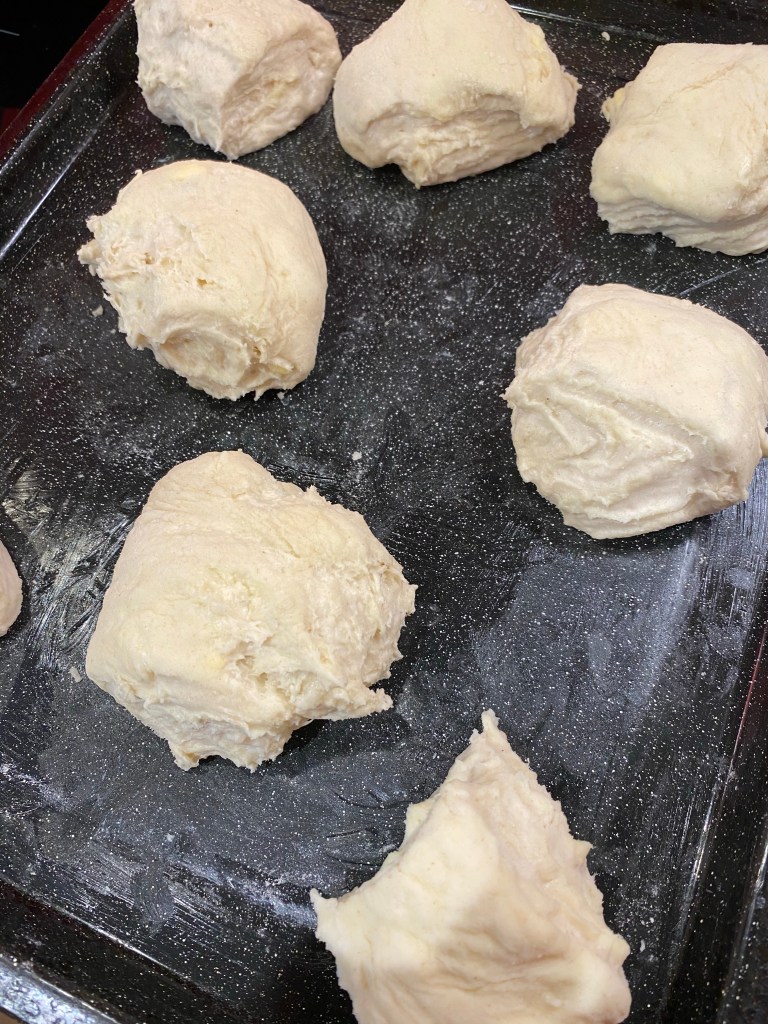
I left the rolls to prove for a further 30 minutes and they do rise a bit more – then I put them into a hot oven ( 200 C ). I added some boiling water to a tray below to create steam – no idea if this makes a difference but in other bread making it can help make a crust.
They take between 20-25 minutes to cook and should be nicely browned. When you take them out, there is what looks like an alarming amount of fat in the tray, so I took them out and let them cool on a wire tray with kitchen roll beneath to absorb the fat.
As a first attempt I was quite pleased although many of them did look more like square edge croissants than Rowies – so maybe I have invented an Auld alliance breakfast delight – the Crowie !
Next time I would tear the dough at the final stage and make them smaller – maybe even flatten them before the final prove. I thought only a few had the distinctive flat fatty brick appearance of a rowie.

The proof of the pudding being in the eating – they tasted like an Aberdeen roll, had a great texture and were both crispy and just salty enough.
My Aberdonian husband pronounced them a success and my mother in law was impressed by my effort so that’s good enough for me.
